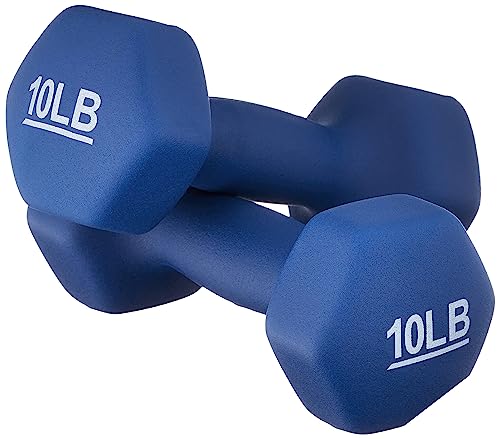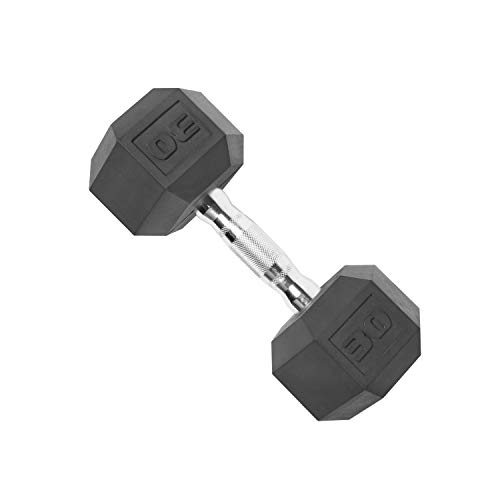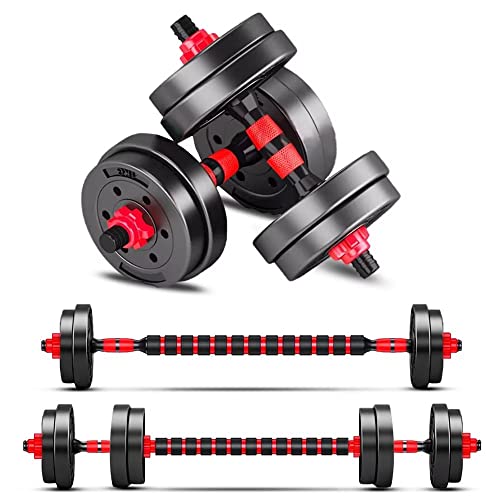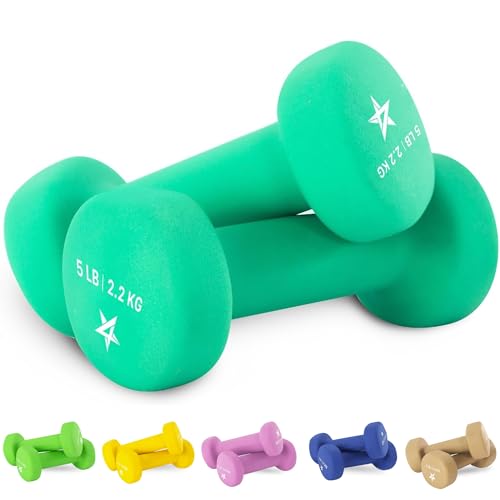What are the essential pieces of strength training equipment for a home gym?
When setting up a home gym for strength training, there are a few key pieces of equipment that can provide an effective full-body workout:
- Adjustable Dumbbells
- Allow you to perform a wide variety of exercises for all major muscle groups
- Take up minimal space compared to a full dumbbell set
-
Look for a set that can be adjusted from 5-50+ lbs in 2.5-5 lb increments
-
Barbell Set with Weights
- Enables compound lifts like squats, deadlifts, bench press, rows, etc.
- A power rack or squat stand makes barbell exercises safer when lifting alone
-
Start with 100-300 lbs of weight plates in various denominations
-
Pull-Up Bar
- Mounts in a doorway or attaches to a power rack
- Useful for pull-ups, chin-ups, hanging core exercises
-
Builds back, biceps and core strength with body weight
-
Adjustable Bench
- Used for chest presses, rows, shoulder presses, and more
- Look for a bench that adjusts from flat to incline to decline
-
Opt for a bench rated for your barbell exercises
-
Resistance Bands
- Versatile tool that can make exercises easier or harder
- Attach to doors, barbells, or use for band-resisted exercises
-
Great for warming up and mobility work
-
Foam Roller
- Helps relieve muscle soreness and tightness
- Can be used before and after workouts or on rest days
- Various densities are available
With these essential pieces of strength equipment, you can perform exercises like:
| Muscle Group | Dumbbell Exercises | Barbell Exercises | Bodyweight Exercises |
|---|---|---|---|
| Chest | Press, Flye | Bench Press | Push-Ups |
| Back | Row, Pullover | Deadlift, Row | Pull-Ups, Inverted Row |
| Shoulders | Press, Lateral Raise | Overhead Press | Pike Push-Ups |
| Biceps | Curl | Curl | Chin-Ups |
| Triceps | Kickback, Extension | Close-Grip Bench | Dips |
| Legs | Squat, Lunge, Calf Raise | Squat, Hip Thrust | Lunges, Step-Ups |
| Core | Weighted Crunch | Rollout | Plank Variations |
By combining the recommended equipment with a variety of compound and isolation exercises, you can build a comprehensive strength training program in the convenience of your own home gym. Start with the basics and gradually add more specialized pieces as your goals and budget allow.
What are the differences between free weights, machines, and resistance bands?
When it comes to strength training equipment, there are three main categories: free weights, machines, and resistance bands. Each type has its own unique benefits and drawbacks.
Free Weights
Free weights include dumbbells, barbells, and kettlebells. They are not attached to any pulley system or machine, allowing for free range of motion.
Advantages:
- Require more stabilization and coordination, leading to greater muscle activation
- Allow for natural movement patterns that mimic real-life activities
- Highly versatile and can be used for a wide variety of exercises
- Generally more affordable and take up less space than machines
Disadvantages:
- Require more technique and proper form to use safely
- May be intimidating for beginners
- Risk of injury is higher if used improperly
- Often require a spotter for heavy lifts
Machines
Strength training machines are weight stacks attached to a pulley system that guide the user through a fixed range of motion. Examples include the leg press, lat pulldown, and chest press.
Advantages:
- Easy to use with clear instructions and diagrams
- Require less technical skill than free weights
- Provide support and stability, reducing risk of injury
- Allow for isolation of specific muscle groups
- Useful for beginners learning basic movement patterns
Disadvantages:
- Limited to fixed ranges of motion that may not suit everyone
- Do not engage stabilizing muscles as much as free weights
- Can be expensive and take up a lot of space
- Wait times may be longer in busy gyms
Resistance Bands
Resistance bands are elastic bands that provide tension when stretched. They come in various thicknesses to provide different levels of resistance.
Advantages:
- Lightweight, portable, and affordable
- Can be used anywhere, making them ideal for travel or home workouts
- Provide constant tension throughout the entire range of motion
- Useful for rehabilitation and mobility work
- Can be combined with free weights or body weight for added resistance
Disadvantages:
- Resistance increases as the band stretches, which may not suit everyone
- Bands can snap or break with heavy use over time
- Provide less total resistance than free weights or machines
- May be less effective for building maximum strength
Ultimately, the best type of strength training equipment depends on your goals, experience level, and personal preferences. A well-rounded strength program often incorporates all three types to provide variety and target the muscles in different ways.
For example, a beginner may start with machine exercises to learn basic technique, then progress to free weight exercises for compound lifts like squats and presses. Resistance bands can be used for additional single-joint exercises and warm-up sets.
By understanding the pros and cons of each type of equipment, you can make informed decisions about which tools to incorporate into your strength training plan.
How do I choose the right weight and repetitions when strength training?
Choosing the appropriate weight and number of repetitions is crucial for making progress and avoiding injury when strength training. The right combination depends on your goals, fitness level, and the specific exercise.
Determining Your Goals
Your strength training goals will dictate the rep ranges you should use:
- For muscular endurance: Aim for 12-20+ reps per set with lighter weights
- For hypertrophy (muscle size): Aim for 6-12 reps per set with moderate weights
- For strength: Aim for 1-5 reps per set with heavy weights
As a beginner, it's best to start with lighter weights and higher reps to focus on proper form and technique. As you become more comfortable with the exercises, you can gradually increase the weight and lower the reps.
Choosing the Right Weight
The right weight should be challenging but allow you to complete all the reps with proper form. A good guideline is to select a weight that causes you to reach muscular fatigue within the target rep range.
For example, if your goal is hypertrophy and you're aiming for 8-10 reps, choose a weight that allows you to complete at least 8 reps but not more than 10 reps with good form. If you can easily do more than 10 reps, the weight is too light. If you can't complete 8 reps, the weight is too heavy.
It's important to note that the appropriate weight will vary depending on the exercise and muscle group. You may be able to lift heavier weights for larger muscle groups like the legs and back compared to smaller muscles like the biceps and shoulders.
Progressing Over Time
As you get stronger, you'll need to gradually increase the weight or reps to continue challenging your muscles. A good rule of thumb is to increase the weight by 5-10% when you can comfortably complete all the reps in your target range for multiple sets.
For example, if you're doing 3 sets of 10 reps with 100 lbs on the bench press, and you can complete all 30 reps with good form, it's time to increase the weight to 105-110 lbs.
Another way to progress is to increase the number of reps or sets while keeping the weight constant. This can be a good option if you don't have access to heavier weights or want to focus on muscular endurance.
Sample Strength Training Plan
Here's an example of how you might structure a strength training plan using different rep ranges:
| Exercise | Sets x Reps | Weight |
|---|---|---|
| Squats | 3 x 8-10 | Moderate |
| Bench Press | 3 x 6-8 | Heavy |
| Lunges | 2 x 12-15 | Light |
| Rows | 3 x 8-10 | Moderate |
| Shoulder Press | 2 x 10-12 | Moderate |
| Bicep Curls | 2 x 12-15 | Light |
Remember to warm up with lighter weights before your working sets and cool down with stretches afterwards. Listen to your body and don't be afraid to adjust the weights or reps as needed. With consistency and progressive overload, you'll be able to make steady strength gains over time.
How often should I use each piece of strength training equipment?
The ideal training frequency for each muscle group and piece of equipment depends on your goals, fitness level, and recovery ability. Some general guidelines:
-
Beginners can see good results training each muscle group 2-3 times per week. This allows for sufficient recovery between workouts.
-
Intermediate and advanced lifters may benefit from training muscle groups 3-4 times per week, often using a split routine where different muscles are trained on different days.
-
With higher frequencies, the per-session volume should be lower to manage fatigue. 2-4 working sets per muscle group per session is a good starting point.
-
Compound exercises like squats and presses can be performed 2-3 times per week, while isolation exercises for smaller muscles like biceps can be done more frequently, around 3-4 times per week.
-
Always allow at least 48 hours between training sessions for the same muscle group to optimize recovery and growth. 1-2 rest days per week are also important.
-
Varying your workouts every 6-8 weeks by changing exercises, rep ranges, or frequency can help you continue progressing and avoid plateaus.
Ultimately, the optimal frequency is the one you can stick to consistently over time while allowing your muscles to recover between sessions. Tracking your workouts and adjusting variables as needed will help you dial in what works best for your body.
What are some effective full-body strength training workouts using minimal equipment?
You can build a strong, muscular physique with just your bodyweight, a few dumbbells, and some resistance bands. Here are some sample full-body workouts:
Beginner Bodyweight Circuit (3 rounds, minimal rest between exercises):
- 20 Bodyweight Squats
- 10 Push-Ups
- 10 Lunges per leg
- 10 Inverted Rows
- 30 Jumping Jacks
- Plank hold
Intermediate Dumbbell & Band Workout (3-4 sets per exercise):
- Dumbbell Goblet Squats
- Dumbbell Bench Press
- Dumbbell Rows
- Banded Lateral Walks
- Dumbbell Romanian Deadlifts
- Banded Pallof Press
Advanced Minimal Equipment Workout (3-4 sets to failure):
- Pistol Squats
- Decline Push-Ups
- Pull-Ups
- Single-Leg Glute Bridges
- Dumbbell Overhead Press
- Ab Wheel Rollouts
The key is choosing compound exercises that work multiple muscle groups at once. Performing them circuit-style with minimal rest keeps the intensity high.
Bands and dumbbells are affordable, versatile tools for adding resistance. Even household items like backpacks or jugs of water can be used for extra weight.
Aim to train 3-4 times per week, increasing reps or resistance over time. With consistency and proper nutrition, minimal equipment workouts can deliver maximal results.
What strength training equipment is most effective for fat loss?
While nutrition is the biggest factor for fat loss, strength training helps build muscle, which increases your metabolism. The best fat loss equipment:
-
Enables compound exercises that work large muscle groups (squats, presses, rows, etc.)
-
Allows for sufficient intensity/resistance to challenge your muscles
-
Is convenient and enjoyable for you to use consistently
Some top choices:
-
Dumbbells - Versatile for full-body workouts, easily adjusted weight. Dumbbell circuits are great for burning calories.
-
Barbells - Squats, deadlifts, presses with barbells are unmatched for building total-body strength and muscle. More muscle = higher metabolism.
-
Kettlebells - Efficient for ballistic exercises that torch fat. Swings, snatches, and goblet squats are top choices.
-
Suspension Trainers - Use body weight as resistance. Exercises like rows, fall-outs, and hip thrusts simultaneously build muscle and burn fat.
-
Stationary Bikes/Rowers - Combining cardio and resistance is effective for fat loss. Intervals on these machines really rev your metabolism.
The best fat loss plan combines 3-4 strength training sessions per week with a slight calorie deficit from nutrition. Choose equipment you enjoy and will use regularly. Mixing up implements and increasing intensity over time will optimize results.
How can I progress and challenge myself with strength training over time?
Progressive overload, or gradually increasing the demands on your muscles over time, is key for continuous gains in strength and muscle. Some ways to implement progressive overload:
-
Increase weight. Add 2.5-10 lbs to an exercise when you can complete all reps with good form. Small increments add up to big gains over time.
-
Increase volume. Add sets and/or reps to your exercises. For example, progress from 3x10 to 4x10 before increasing weight.
-
Decrease rest periods. Shortening rest between sets increases intensity and can spur new muscle growth when you plateau.
-
Improve form. Slower negatives, pausing at the bottom of a rep, and fuller ranges of motion make exercises harder without changing weight.
-
Adjust frequency. Add an extra day per week training a lagging muscle group. Just ensure total volume remains similar.
-
Vary exercises. Swap in new exercises for the same muscle groups every 4-8 weeks. This novel stimulus can trigger new growth.
-
Try advanced techniques. Methods like drop sets, supersets, and cluster sets can be used sparingly to push past plateaus.
The key is making small increases consistently rather than large jumps that can lead to injury or burnout. Aim to increase something each week, even if it's only one extra rep.
Tracking your workouts is crucial to ensure you're improving over time. Celebrate small PRs and focus on the long game!
In summary, building muscle and strength is a journey that requires challenging your muscles with sufficient intensity and volume consistently over time. Choosing the right equipment and exercises, training each muscle group at the optimal frequency, and employing progressive overload techniques will keep you progressing toward your goals. With smart programming and patience, you can look forward to gains for years to come!




